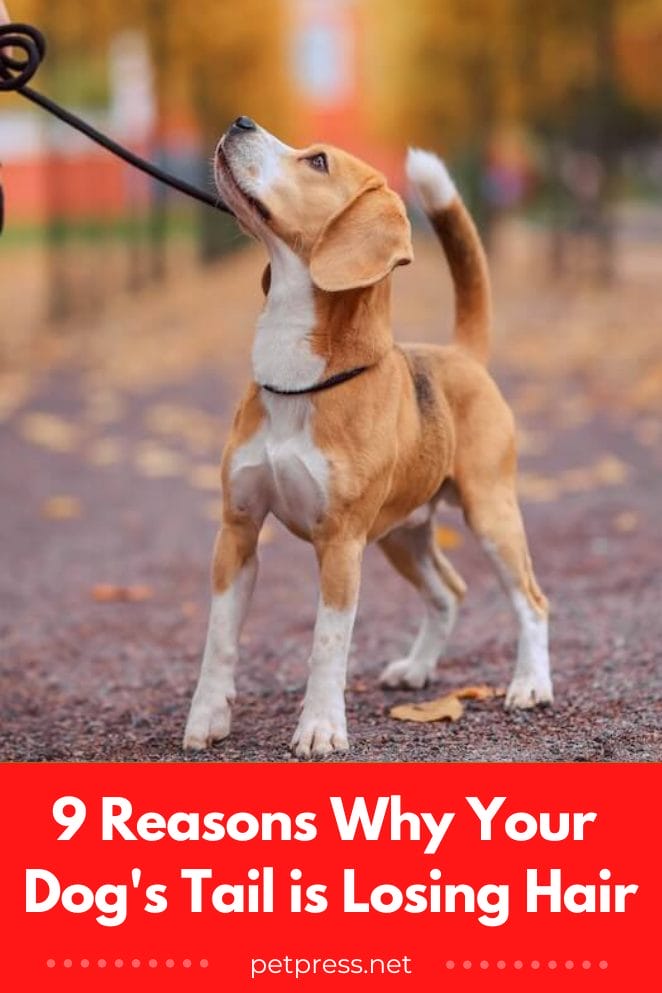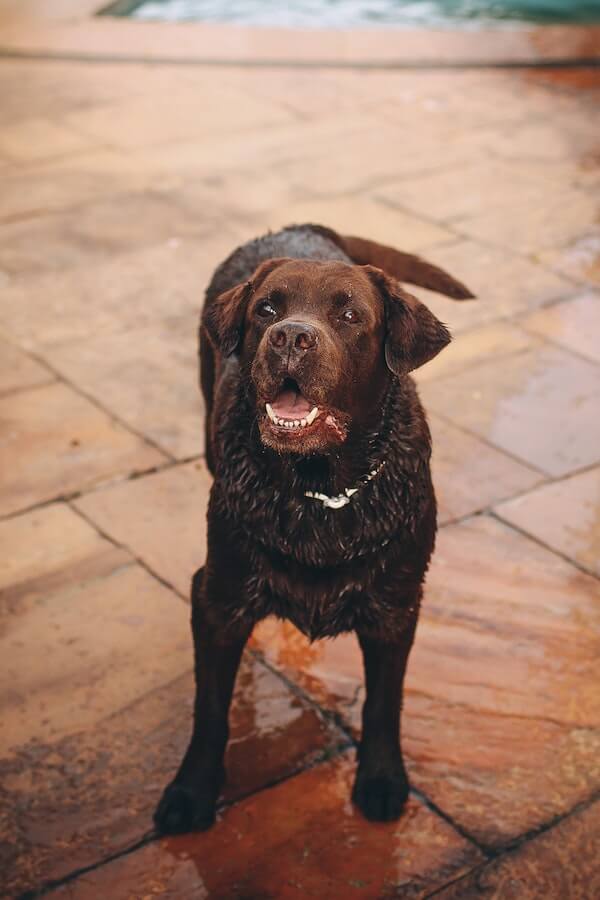
Are you wondering why your pup’s tail appears a bit patchy lately? Why is your dog’s tail losing hair?
While this may seem odd or concerning, losing some fluffiness from their tush isn’t all that unusual for a pup.
Let’s take a look at why dogs lose tail hair and how to help them feel like themselves again!
Why is my dog’s tail losing hair?
Dogs can have many different issues that cause them to lose their tail hair. Below are 9 of the most common reasons why your pup’s tail might be showing some bald spots:
1. Parasites:
Fleas, mites, and other parasites are common culprits for fur loss in dogs. These critters can cause intense itching and inflammation in your dog’s skin, leading to patches of missing fur along their tail.
2. Allergies:
Just like humans, dogs can suffer from allergies that result in rashes or skin irritation which can lead to hair loss on their tails or other areas of the body.
Common allergens for pets include food, flea bites, pollen, dust mites, and mold.
3. Stress:
Stress can cause dogs to groom excessively and pull out fur from their tails and other areas of the body, leading to bald spots.
This can be an especially common problem in new pet owners who are still learning how to properly care for their pups.
4. Bacterial infection:
If your dog has a bacterial infection, such as mange, it can lead to hair loss on the tail as well as other areas of the body.
This type of infection is usually treatable with antibiotics prescribed by your veterinarian.

5. Hormonal imbalance:
Dogs that have an imbalance in their hormones may develop bald spots or patches of missing fur on their tail or other areas of the body due to changes in oil production.
This type of condition is usually treatable with medications or supplements prescribed by your veterinarian.
6. Grooming:
If you’re using too harsh a brush or comb on your dog’s tail, it can lead to hair loss and bald spots.
Make sure to use the appropriate tools for grooming and never drag the comb through tangles or knots—this can cause skin irritation which leads to hair loss in some cases.
7. Ringworm:
Unfortunately, ringworm is a highly contagious fungal infection that often appears as bald patches on dogs (as well as humans).
In most cases, ringworm is treatable but requires medical attention from a professional such as a veterinarian.
8. Poor nutrition:
Dogs who don’t get the right balance of vitamins and minerals in their diet are more prone to hair loss.
Make sure your pup is getting quality dog food that contains all the nutrients they need for healthy fur growth and coat maintenance.
9. Cushing’s disease:
Cushing’s disease is a condition that can cause excessive fur loss in dogs. It is caused by an excess of the hormone cortisol in the body, which can interfere with normal hair growth.
If you think your pup may have Cushing’s, it’s best to speak to a veterinarian as soon as possible.
How do you treat hair loss on a dog’s tail?

When it comes to hair loss on a dog’s tail, there can be quite a few causes. Luckily, there are several ways you can help your pup keep their fur in top condition.
Here are five of the most effective methods for treating hair loss on a dog’s tail:
1. Start with an Allergy Test:
If your pup has been dealing with hair loss for some time or if their symptoms seem seasonal, it’s important to rule out any potential allergies as the cause of their discomfort.
An allergy test will help you determine what type of allergens may be triggering their reaction so that you can take steps to avoid them in the future.
2. Investigate Parasites:
Another possible culprit for hair loss on a dog’s tail is parasites, like fleas and ticks. Make sure to check your pup regularly for any signs of infestation, such as itchy spots or patches of furless skin.
If you do find any evidence of an infestation, treat your pet with the appropriate medication immediately.
3. Change Your Dog’s Diet:
Sometimes, baldness can be caused by a nutritional deficiency due to dietary restrictions or inadequate amounts of certain vitamins and minerals.
Consider switching up your pup’s diet to include more nutrient-rich foods that will promote healthy fur growth, such as fish oils and fatty acids.
4. Use Topical Ointments:
If your pet’s hair loss is due to a bacterial or fungal infection, you may need to apply a topical ointment on their tail area in order to alleviate the symptoms and promote healing.
Ask your vet for an appropriate treatment option for your pup’s unique situation.
5. Follow a Regular Grooming Routine:
Finally, it’s important to establish a regular grooming routine for your pup in order to keep their fur healthy and free of excess shedding.
Brushing their coat at least once per week will help remove any debris from the fur and prevent matting, as well as distribute natural oils throughout the skin and hair follicles.
Additionally, regularly trimming their nails and bathing them as needed will help keep their tail area looking its best.
Conclusion

A dog’s tail is a very interesting and cute part of its body. Unfortunately, the loss of hair can be a little alarming for new pet owners.
No matter the cause of your pup’s tail hair loss, it’s important to visit a veterinarian and get to the root of the problem so that proper treatment can be administered.
With the right care and attention, you should be able to see a healthy and furry tail on your pooch once again!
- 7 Dog Breeds With Webbed Feet And Why Do They Have Them - July 19, 2023
- 10 Best Fish For Small Tanks That Make Perfect Pets - July 18, 2023
- How to Breed Guinea Pigs: A Detailed Guide - July 17, 2023


GIPHY App Key not set. Please check settings